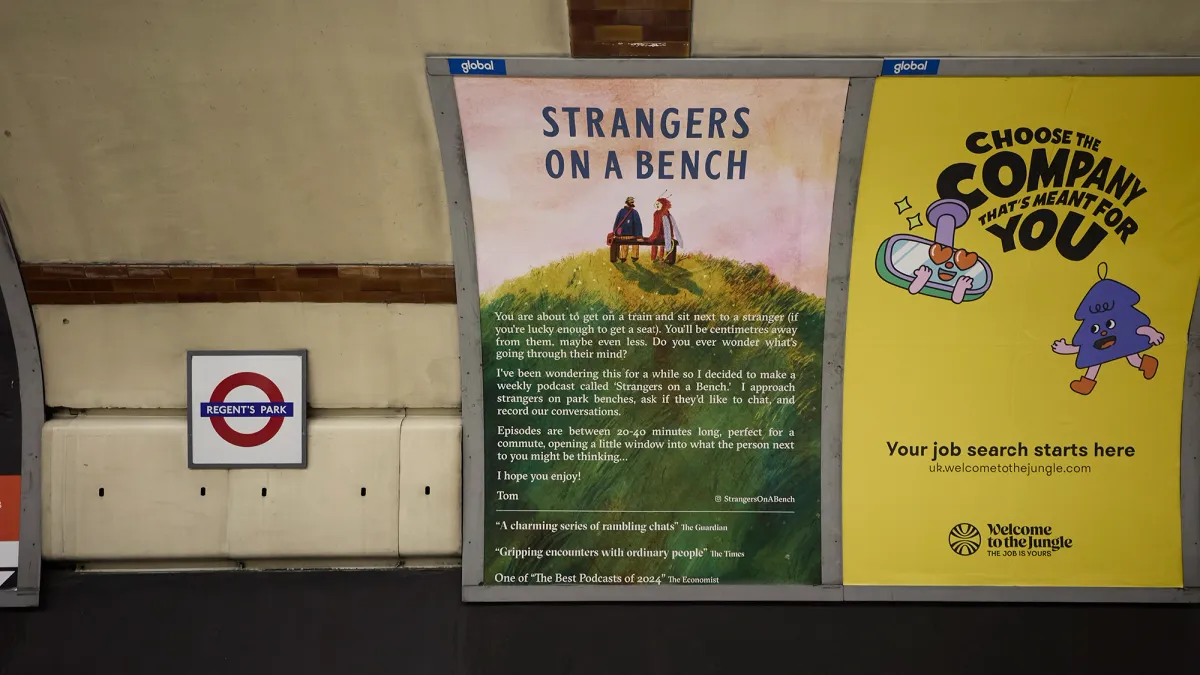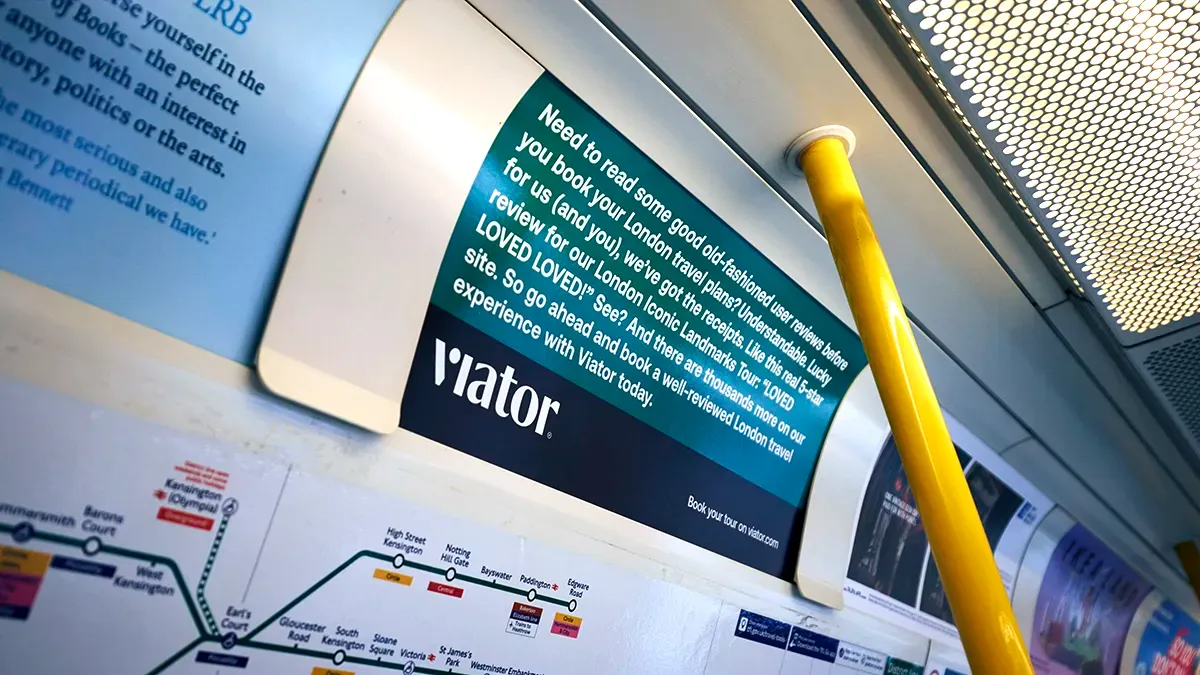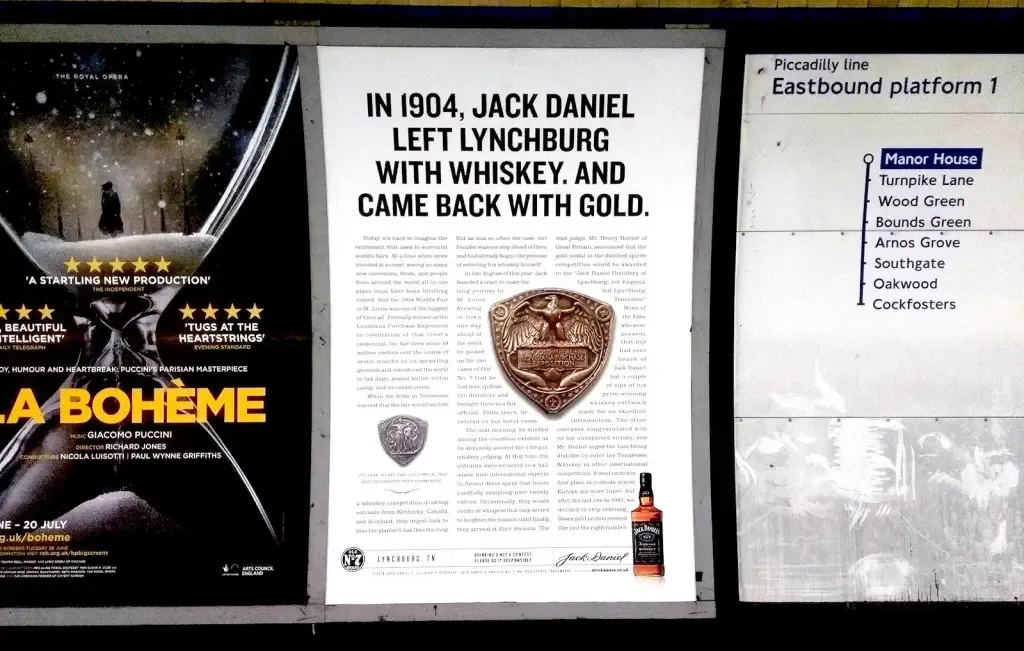
The recent story of book swaps being removed and then reinstated on the London Underground highlights something fascinating about commuter behaviour. Londoners value reading as part of their daily journey. Whether it’s a paperback, an e-book, or words on a poster, the act of reading has long been intertwined with Tube travel. For brands, this habit presents a golden opportunity to engage passengers in one of the few moments of genuine stillness in a busy city day.
The pull of reading during commutes
Book swaps began as a community initiative: a chance for travellers to pick up and share titles while in transit. When these were taken away, public backlash was immediate. The reinstatement demonstrates how strongly people associate Tube journeys with the chance to read.
While smartphones have become the default, many commuters still prefer tangible words on a page. This reinforces that Tube time isn’t dead time but instead active engagement time. Advertisers who understand this mindset can place campaigns where they’ll be read, not just glanced at.
Why Tube car panel advertising works
Car panel posters are placed directly above seats and along the carriage walls. They are designed to be read while passengers sit or stand. The average Tube journey lasts around 30 minutes, giving ads extended dwell time compared to roadside or digital formats.
Panels work particularly well for:
- Brands with detailed messages – Because commuters are in reading mode, they’re more open to absorbing longer copy or informative storytelling.
- Campaigns targeting professionals – The Tube moves millions of workers daily across Zones 1 and 2, many of whom are decision-makers and high earners.
- Lifestyle and service brands – From fitness apps to travel providers, products that tie into everyday life resonate strongly during commuting.
Learn more about this impactful format here: Tube car panel advertising.

Cross track advertising with 16 sheet posters
The same behaviour that drives commuters to read books and car panel ads applies to cross track posters. When passengers wait on platforms, their gaze naturally turns to the posters across the tracks.
16 sheet posters offer a long-form canvas for storytelling. Measuring over three metres tall, they are impossible to miss and provide brands with space to combine striking visuals with informative copy.
Why they work:
- Extended dwell time – Trains arrive every few minutes, giving passengers several uninterrupted minutes to absorb a poster in full.
- Room for creativity – Brands can combine bold imagery with paragraphs of copy, much like a magazine spread, appealing to commuters in a reading mindset.
- High frequency exposure – Regular travellers often use the same platform daily, reinforcing campaign messages over time.
For brands that want to go beyond a quick headline, 16 sheet posters allow detailed messaging that resonates with commuters’ desire to read.

Commuter attention is a premium space
Unlike outdoor billboards, Tube car panels and cross track posters don’t compete with moving traffic, scrolling feeds, or flashing screens. Instead, they become part of the natural rhythm of the commute. Just as a commuter reaches for a book, their eyes are just as likely to land on a well-crafted advert.
This means brands can frame their message almost like a chapter in the commuter’s journey. A witty tagline, clear visuals, or a clever call to action can travel with them from station to station.
Linking brand stories to commuter behaviour
The reinstatement of book swaps demonstrates a truth for advertisers that passengers look for words, stories, and ideas on the Tube. If your campaign can tap into those behaviours, your brand will feel less like an interruption and more like part of the journey.
Tube advertising is about visibility, but more importantly, it’s about resonance. By meeting Londoners in their reading mindset, brands can create campaigns that stick long after the train doors open.
FAQs
Why do commuters read so much on the Tube?
Tube journeys create uninterrupted time where reading feels natural. Many passengers use books, papers, or posters as a way to pass the journey productively.
Why is car panel advertising effective on the London Underground?
Car panels have long dwell times and are positioned at eye level. They’re designed to be read, making them perfect for campaigns with storytelling or detail.
What makes 16 sheet cross track posters powerful?
They dominate platform views, provide extended dwell time, and allow brands to combine bold creative with informative copy commuters are primed to read.
What type of brands should use these formats?
Brands with lifestyle offers, professional services, or detailed messages — from apps to financial services — benefit most from the extended engagement these formats offer.
Latest News
07 Apr 2025 · 3 minute read
by Penny Hargreaves
Magical Adventures: Exploring Harry Potter Filming Locations via the London Underground
15 Dec 2025 · 4 minute read
by Penny Hargreaves
Smithfield Market Christmas Eve Auction and a Proper London Tradition
30 Sep 2025 · 4 minute read
by Penny Hargreaves
How the “Stop Hiring Humans” Campaign Captured London's Underground Attention
Our Valuable Clients, Past and Present
Schedule a call
Pick a date and time for a call that suits you.
We can go through all the available format options and any other questions you have about successfully launching your next advertising campaign.
Launch Your Tube Campaign Today!
Get your brand in front of millions of Londoners and tourists as they move through the city. Just fill in your details on the form to advertise on the London Underground, and our expert team will be in touch to kickstart your journey towards standout, high-impact results.
Join the 1000s of brands, big and small, who stand out and connect with the transport network’s users.
.webp)



















